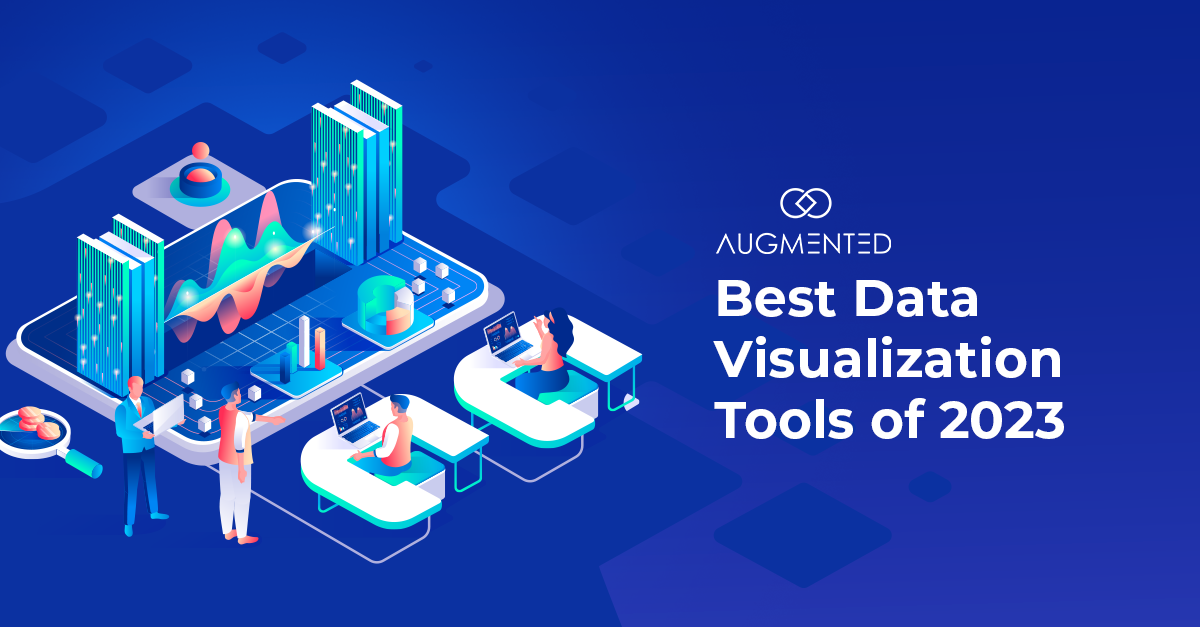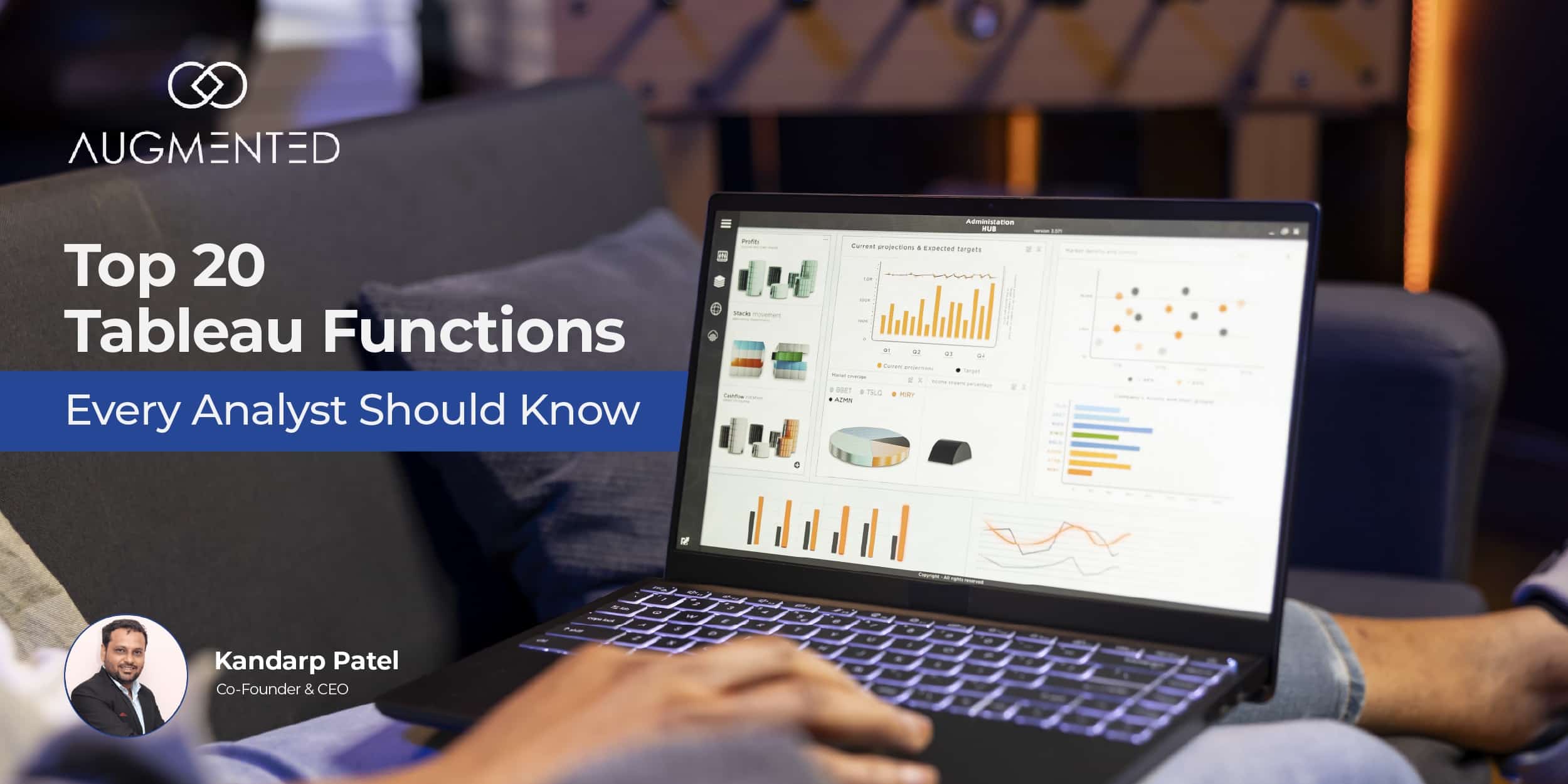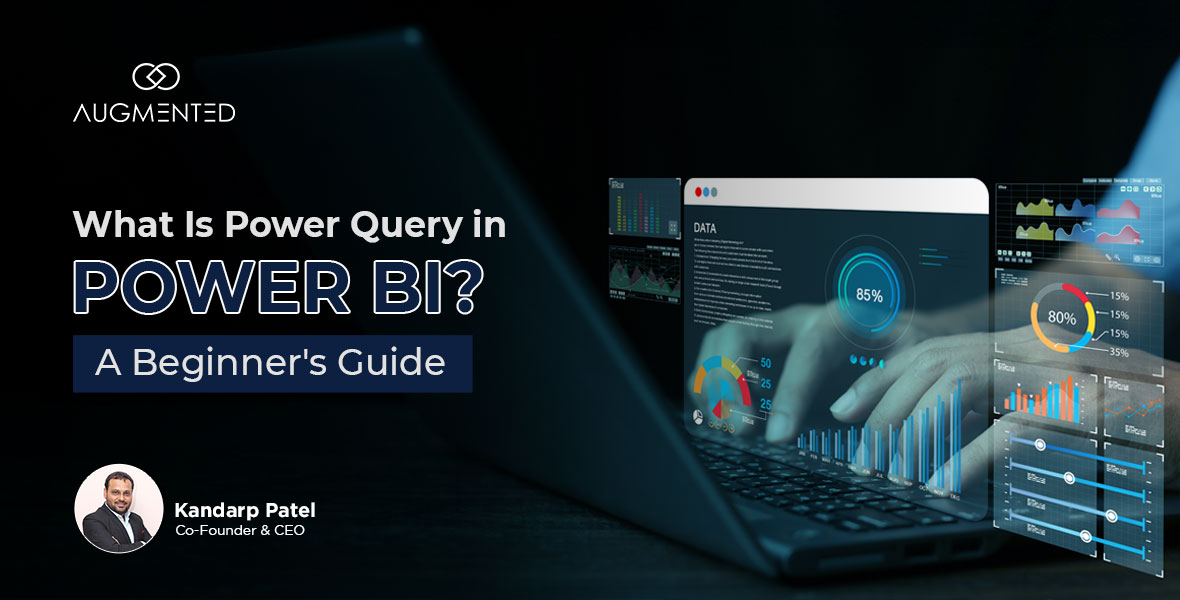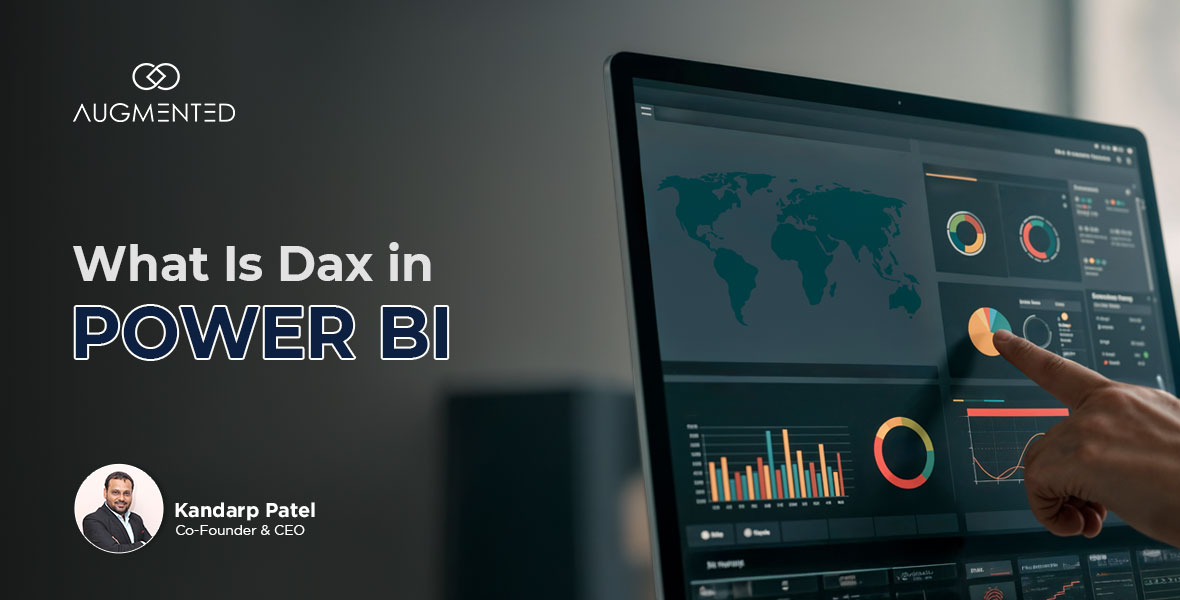If you’ve clicked on this blog, you find yourself in a situation where you have an important dataset to analyze but are unsure which data visualization tools to use.
Fortunately, your search ends here.
In this blog post, we’ll provide a thorough understanding of data visualization tools, why they are important, and how you can find the best one that suits your requirements. We’ve selected some of the cutting-edge data visualization tools to help you discover different insights and patterns within your data.
We’ll also dig into the advantages and drawbacks of each tool so that you have all the details you need to select the best companion for your team’s particular requirements.
Let’s get started.
What is Data visualization, and Why Is It Important?
The term "data visualization" describes the visual depiction of data and information using tools like maps, charts, graphs, and other visual aids. Data visualization helps make complex and big datasets understandable and accessible so that patterns, trends, and insights may be quickly found and understood.
By translating raw data into visual formats, data visualization improves communication, analysis, and decision-making across various areas- from business and science to journalism and academia.
Importance of Data Visualization
Data visualization provides a quick and effective approach to presenting information by using images and graphics that everyone can understand. It highlights patterns and insights that can’t be detected through raw data analysis.
For example, through a data visualization tool of sales data, it becomes evident that the sales of a certain product spikes during the weekends.
An exceptional visualization communicates a story by removing irrelevant aspects and emphasizing the crucial ones.
Let’s understand how data visualization can be crucial in different areas.
1. Data Visualization in Business Analytics
Business analytics is the investigation of business information to assist firms in making sensible choices. Data visualization is important because it displays the most recent trends and patterns.
For example, when reviewing sales data, tools like Tableau or Google Charts allow the company to rapidly determine whether sales are increasing or decreasing.
2. Data Visualization in Business Intelligence
In business intelligence, data visualization facilitates more informed strategic decisions.
For example, if a company aims to boost sales by 15% in a year. By utilizing data visualization, they can monitor sales trends, pinpoint successful products, address underperforming items, and craft targeted marketing strategies for enhanced outcomes.
3. Data Visualization in Big Data Analytics
Dealing with big data analytics can be intimidating due to the volume of data. Data visualization can help comprehend this information by highlighting hidden connections and structures that go unnoticed.
For instance, when facing a dataset with millions of rows, data visualization tools provide a straightforward way to unearth patterns that would be hard to spot otherwise.
4. Data Visualization in IoT
The Internet of Things (IoT) is like a big network of things connected to the Internet. This can be anything from smartwatches to industrial machinery.
Data visualization is important in IoT because it helps make sense of the data these devices create.
For example, it can aid in detecting faults with these devices early, allowing the company to address them before they cause major problems.
5. Data Visualization in Data Science
Data science is like solving puzzles with big sets of information. Data visualization turns data into pictures and graphs, helping data scientists see important trends and connections. This helps them make smarter decisions that lead to new ideas and discoveries.
For instance, if a scientist is studying a disease and wants to know which genes are linked, they can use data visualization tools to group similar genes and figure out more about them.
After understanding what data visualization is, the question that might leave you scratching your head is: Who will invest countless hours plotting dots on the scatter chart? That’s precisely where data visualization tools come into play.
What are Data Visualization tools?
Data visualization tools are software that helps users craft visual displays of data and information. They enable the presentation of intricate data in a manner that makes it easy to understand and interpret.
The primary goal of these tools is to simplify data interpretation and facilitate the extraction of valuable insights from it. Each tool has unique features, but at its core, it lets you enter data and change its appearance using graphics.
Augmented Systems data visualization tool is a game-changer for businesses seeking to gain deeper insights from their data.
Though not all, many of these tools also provide ready-made templates for crafting basic visual representations.
Let’s delve deeper into our selection of the best 9 data visualization tools. This will bring you one step closer to converting complex data into visually captivating and effortlessly understandable insights.
9 Best Data Visualization Tools Of 2023
Let’s have a look at some of the best data visualization tools.
Disclaimer: The prices, reviews, and ratings are taken from the respective companies’ websites as of the date of publishing this blog. These things are subject to change and we request you to please refer to the respective websites for the latest pricing.
1. Power BI
Microsoft's Power BI, a user-friendly application for data visualization, provides a variety of options for showing data on local computers and in the cloud. It functions with numerous robust databases like Teradata, Salesforce, and SQL Server.
Additionally, it integrates with well-known programs like Excel, a creative toolset for data. This technology aids organizations in producing eye-catching images and offers immediate insights that accelerate decision-making processes.
In a nutshell, Power BI is a powerful data assistant that makes complex information simple to comprehend and use.
Pros of Power BI
- Doesn't need special tech support
- Fits smoothly with current apps
- Makes custom dashboards
- Offers strong security
- No worries about speed or memory
- Compatible with Microsoft products
Cons of Power BI
- Can't handle many different datasets.
Pricing
Power BI Pro:
- Cost: $13.70 per user per month
- Suitable for regular users
Power BI Premium:
- Cost: $27.50 per user per month
- Offers more advanced features
- Good for intensive use
"Per Capacity" Plans:
- Tailored for large organizationsCustom pricing based on needs
Customer ratings
- G2- 4.4/5 (1000 reviews)
- Capterra - 4.6/5 (1466 reviews)
2. Tableau
Tableau is a well-known data visualization and analysis platform suited to large corporations' needs. Its powerful data handling features make it ideal for processing and understanding large amounts of data, allowing enterprises to get insights.
Interactive visuals can be readily created and shared using numerous visualization techniques it offers. If you're seeking a robust analytics tool for massive data and advanced visuals, Tableau is a top choice.
Pros of Tableau
- Excellent visualizing abilities
- Interface that is simple to use
- Capabilities for high performance
- Allows access to many data sources.
- Mobile device responsiveness
- A helpful and informative user community
Cons Of Tableau
- Pricing is on the expensive side.
- There are no auto-refresh or report scheduling options.
Pricing
There exists a free edition known as Tableau Public. A payment of $70 per user per month is required for access to more advanced functionalities.
Customer Ratings
- G2- 4.4/5 (1836 reviews)
- Capterra - 4.5/5 (2,100+ reviews)
3. Infogram
Infogram stands out as a prominent web-based tool for crafting engaging infographics and data visuals. It caters to all users, enabling easy creation of interactive reports, dashboards, and captivating data-driven infographics.
With a range of features, including 550+ maps, 35+ charts, 20 templates, images, icons, and a drag-and-drop editor, it suits beginners and experts alike. Users can customize colors, styles, logos, and display options.
The extensive library encompasses a million icons, GIFs, and photos. Interactive charts facilitate linking for audience engagement. The tool also enables the creation of interactive and shareable reports, complete with performance metrics to evaluate audience interaction.
Pros of Infogram
- Grabs the reader's attention with visually appealing content.
- Offers diverse output options: charts, infographics, one-pagers, and reports.
- User-friendly interface suitable for all skill levels.
- Access to a wide range of assets: maps, charts, templates, icons, images, and GIFs.
- Customizable elements: colors, styles, logos, etc.
- Facilitates shareable content creation with built-in metrics for tracking engagement.
Cons of Infogram
- Some believe that Infogram is not suitable for enterprise-level companies.
- Number of licenses available for the enterprise version is limited.
- Users may struggle with integrating custom fonts and databases.
Pricing
- Basic: $0/month for 10 projects
- Pro: $19/month for 100 projects
- Business: $67/month for 1,000 projects
- Team: $149/month for 3,000 projects
Customer Ratings
- G2- 4.7/5 (178 reviews)
- Capterra - 4.5/5 (71 reviews)
4. Plecto
Plecto is a comprehensive business dashboard solution for businesses of all sizes. It enables users to create tailored dashboards by combining data from multiple sources and systems.
The combination of data visualization, gamification, and data management technologies streamlines KPI monitoring, team engagement, and employee guidance on a single platform. Plecto's custom dashboards provide real-time data visualization, allowing users to easily and precisely manage company objectives and outcomes.
Individuals can create personalized dashboards using user-friendly dashboard widgets and a drag-and-drop interface.
Pros of Plecto
- With the Plecto app for iOS and Android, you can visualize real-time performance data on any screen and follow progress.
- Gamification components such as contests, leaderboards, and achievements can be used to motivate teams and create engagement.
- Consolidate data from several sources into a single dashboard widget to display informative KPIs.
- Data from many sources, such as integrations (Salesforce, Podio, Pipedrive, Zendesk, and so on), spreadsheets (Excel), databases (SQL), and human entries, are shown.
Cons of Plecto
- Not affordable for small-sized enterprises.
Pricing
- Medium- $200 per month for the first 10 licenses - yearly payment.
- Large -$350 per month for the first 10 licenses - yearly payment.
Customer Ratings
- G2- 4.1/5 (34 reviews)
- Capterra - 4.5/5 (31 reviews)
5. Qlik
Qlik Sense features an AI-powered data analysis engine, letting you mirror how the human mind processes information. Irrespective of data sources or dataset size, Qlik Sense effortlessly manages it all.
It simplifies data import, visualization, and analysis with interactive charts. All charts and visuals are update in real time, ensuring you always have the latest, precise information. You can then transform this data into relevant insights, storing them in the cloud for access from various devices.
Pros of Qlik
- Utilizes AI machine learning for data analysis.
- Charts update automatically based on data context.
- Seamless integration with various data sources.
Cons of Qlik
- Steeper learning curve.
- Smaller enterprises might find it relatively expensive.
Pricing
- Free trial available before upgrading.
- The paid version costs $30 per user per month.
- Enterprise plan details require direct contact with sales.
Customer Rating
- G2- 4.5/5 (653 reviews)
- Capterra - 4.4/5 (242 reviews)
6. Google Data Studio
Google Data Studio offers an easy-to-use entry point for newcomers in data visualization. With easy login using Google credentials, it quickly enables access to its platform. While it offers a more limited template selection, the tool remains valuable for analyzing client metrics and business trends.
It effortlessly connects with external data sources, simplifying data extraction and transformation. Even for those without extensive experience, its built-in features empower the conversion of raw data into meaningful visualizations. The collaborative aspect, similar to other Google tools, promotes real-time teamwork.
Pros of Google Data Studio
- Beginner-friendly interface.
- Operates on a cloud-based platform.
- Facilitates real-time collaboration on data reports.
Cons of Google Data Studio
- Not suitable for handling intricate data visualizations.
- Limited capability in sourcing data from external origins.
Pricing
- It’s free for everybody.
Customer ratings
- G2- 4.6/5 (11 reviews)
- Capterra - 4.5/5 (298 reviews)
7. Plotly
Plotly serves as an analytical powerhouse, allowing you to swiftly create charts, presentations, and dashboards using basic spreadsheets. You can leverage its capabilities with JavaScript, Python, R, MATLAB, Jupyter, or Excel.
Through its web-based charting tool, you can rapidly craft visually appealing graphics catering to personal use or collaborative efforts.
Pros of Plotly
- There are numerous options for importing data.
- Solutions may be implemented in several ways.
- The tool is simple to use.
- It makes collaboration and teamwork easy.
Cons of Plotly
- Speed can be a concern at times
- The free version has several limitations.
- Multiple screen flashings can cause confusion and distraction.
Pricing
- Student plan: $59 per user per year.
- Personal plan: $396 per user per year.
Customer ratings
- G2- 4.8/5 (34 reviews)
- Capterra - 4.8/5 (8 reviews)
8. Domo
Domo is a business intelligence tool designed for companies dealing with complex or extensive datasets. Major organizations such as eBay, ESPN, Cisco, and Emerson are among Domo's users.
Pros of Domo
- Offers a wide array of report and chart templates.
- Features a natural language query capability to answer basic data questions.
- Can analyze data from over 1,000 sources.
- Provides alert functionality for reaching set goals.
Cons of Domo
- Not suitable for beginners.
Pricing
- Domo's pricing is tailored to each organization's needs. To get a quote, it's best to contact the sales department.
Customer ratings
- G2- 4.4/5 (702 reviews)
- Capterra - 4.3/5 (279 reviews)
9. Zoho Analytics
Zoho Analytics is a valuable data visualization tool specifically useful for marketing and sales professionals. It's a dual-purpose software, serving as a business intelligence and data analytics solution with a strong emphasis on data security.
It empowers you to fetch data from various sources and swiftly craft multidimensional visualizations. In a short span, you can create customized dashboards featuring interactive tables, charts, and more tailored to your company's requirements.
By incorporating enhanced analytics, Zoho Analytics provides automatic insights without manual analysis.
Pros of Zoho Analytics
- User-friendly drag-and-drop interface.
- High level of customization is available.
- AI-based assistant
Cons of Zoho Analytics
- Data viz experience is required to use this tool effectively.
Pricing
Personal Use:
- Free to use
Enterprise Plans
- Starts at $24 per month.
Customer ratings
- G2- 4.2/5 (284reviews)
- Capterra - 4.4/5 (280 reviews)
After learning about the 9 best data visualization tools, let’s proceed and understand how to pick the best one for your specific needs.
How to Choose the Best Data Visualization Tool?
Selecting the ideal visualization tool involves making challenging decisions to discover the most suitable match for your requirements. No single data visualization service universally serves all users or situations.
Let us guide you through these trade-offs, helping you pinpoint the data visualization tool that best aligns with your goals, skills, and resources.
1. Flexibility
Unless you're after a very specific and limited solution, the flexibility of your data visualization tool is a crucial factor. To make the most of your data, it should cover many functions, starting with getting the data ready so that you can create useful and meaningful visuals.
Having advanced and predictive analytics helps you get the most from your data and anticipate the future. This way, you can make smart choices for your company.
Moreover, a versatile tool is also suitable for all types of users, no matter their level or job. For instance, while some use it to analyze data, create charts, and other ways to show data, others might only edit or view these visuals.
2. Proposal Models
There are two primary models for data visualization software proposals: the All-Inclusive model, which includes all functionalities in the subscription, and the Custom-Made model, which offers extra paid options.
The first model ensures clear transparency: You know precisely what you're paying for, avoiding surprises. In contrast, Custom-Made options grant initial flexibility but can become costly with added features.
3. Deployment Expenses
It's crucial to accurately estimate the expenses when embarking on a significant project, like implementing a data visualization solution. This makes pricing one of the most critical factors.
The pricing should fit well with your company's size, needs, and available resources. As previously mentioned, the proposal should be transparent, giving access to essential features without restrictions and with a clear cost.
For larger organizations, choosing a solution that works well on a big scale is important, as more users might lead to higher costs. Hence, they should plan for a well-thought-out proposal that suits their company's needs.
4. Data Handling Capability
This element is essential because data visualization tools are designed to speed up and make data processing simpler. Therefore, picking a solution that functions effectively under heavy data loads is crucial while avoiding speed and efficiency issues.
Assess how productively the tool can manage a variety of data sources. It should connect to numerous databases and import various file types without problems. Additionally, it should be simple to see various data sets in a unified manner through a single dashboard.
5. Mobile Compatability
For the best results, your data visualization platform should be easy for everyone to use and accessible at all times. This means it should work well on different devices.
Choosing a solution with a responsive design or a mobile web app is a good idea. This lets you easily create a mobile app so users can check information on their tablets or smartphones whenever they want.
6. Support
Setting up a data visualization platform can be technical, as can its daily usage. This underscores the importance of having your supplier available to provide assistance and support. They can help you address any challenges that you may encounter.
Summary
Data visualization tools make complicated information simple and guide data-based choices. The correct tool gathers all your data sources in one place, ensuring vital information is easily accessible at your fingertips.
From business analytics to big data processing, these tools serve as indispensable companions, enabling organizations to unlock valuable insights from their data.
So, explore, experiment, and leverage the best data visualization tools available to turn data into insights, insights into actions, and actions into success.
Get in touch with our data visualization experts to present complex data in clear and intuitive visuals.





